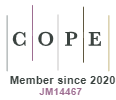Socio-environmental vulnerability to disasters:
scenarios and challenges for the municipality of Brusque (SC)
DOI:
https://doi.org/10.5585/geas.v12i2.22368Keywords:
socio-environmental disasters, environmental vulnerability;, impact, mass movements;, BrusqueAbstract
Objective: Since the beginning of this century, the municipality of Brusque has recorded a significant increase in landslide occurrences, which have caused both serious damage to the city's infrastructure and fatalities. This article aims to classify the socio-environmental vulnerability (SEV) of the municipality of Brusque, in the state of Santa Catarina (SC), to socio-environmental disasters (landslides).
Methodology: The SEV mapping was developed from a multi-criteria analysis with the aid of a geographic information system (GIS). In order for the SEV classification to function, it was necessary to calculate the propensity (Ivs) and exposure (VAT) indices. The indices were cross referenced in a social and environmental vulnerability matrix.
Originality/Relevance: The relevance of the study is justified by evaluating the methodology that not only considers the physical natural environment, but also the ability of the community to prevent, absorb, resist/respond and adapt to socio-environmental disasters.
Main Results: The results have classified Brusque as a municipality of high socio-environmental vulnerability to landslides. This classification indicates a pattern of high environmental susceptibility with an increased number of inhabitants living in risk areas.
Contributions: This article aims to contribute through advances in evaluation research and the formulation of integrated risk and resilience management proposals in the municipalities of Vale do Itajaí/SC/Brazil. In this context, it is important to understand scenarios with the greatest impact of socio-environmental disasters as a tool for urban planning and disaster risk management in the city of Brusque/SC
Keywords: socio-environmental disasters; environmental vulnerability; impact; mass movements; Brusque.
Downloads
References
Acserald, H. Urban environmental conflicts, vulnerabilities and inequalities. In: Philippi Jr, A &; Bruna, G.C.(Org.). Urban Management and Sustainability. 1ed. Barueri: Manole, 2018.
Albala-Bertrand, J. M. (1993). The political economy of large natural disasters. Oxford: Oxford University Press.
Almeida, A.B. (2014). Risk and uncertainty management: concepts and underlying philosophy. In.: Realities and challenges in risk management: dialogue between science and users. Coimbra University Press. p.19-29.
Artaxo, P. (2014). A new geological era on our planet: the Anthropocene? USP Magazine, n. 103, p. 13-24. Retrieved from https://doi.org/10.11606/issn.2316-9036.v0i103p13-24
Avila, M. R. R. & Matedi, M. A. (2017). Disaster and territory: the production of disaster vulnerability in the city of Blumenau/SC. Brazilian Journal of Urban Management, 2017. Retrieved from https://periodicos.pucpr.br/index.php/Urbe/article/view/22089/21319
Beck, U. (2015). Emancipatory catastrophism: What does it mean to climate change and risk society? Current Sociology, 63(1): 75–88.
Carmo, R.L. & Anazawa, T.M. (2014). Disaster mortality in Brazil: what the data show. Revista Ciência & Saúde Coletiva, 19(9):3669-3681. Retrieved from 10.1590/1413-81232014199.07432014
Costa, M.V. et al. (2005). Uso das Técnicas de Avaliação de Impacto Ambiental em Estudos Realizados no Ceará. In: XXVIII Brazilian Congress of Communication Sciences, Anais INTERCON, Rio de Janeiro.
CPRM - Geological Service of Brazil (2019). Sectorization of Geological Hazards of Santa Catarina. Retrieved from http://www.cprm.gov.br/publique/Gestao-Territorial/Prevencao-de-Desastres/Setorizacao-de-Riscos-Geologicos---Santa-Catarina-4866.htm
CRED - Centre for Research on the Epidemiology of Disasters (2023). Disasters in numbers. CRED. Retrieved from https://www.preventionweb.net/publication/2022-disasters-numbers?utm_source=PreventionWeb&utm_campaign=8d268f2c6f-PreventionWeb+daily&utm_medium=email&utm_term=0_b73053c1c6-8d268f2c6f-485859101.
Cutter, S. (2011). The science of vulnerability: models, methods and indicators. Critical journal of social science, 93(1): 59-70.
Cutter, S, Mitchell, J & Scott, M. (2000). Revealing the Vulnerability of People and Places: A case study of Georgetown County, South Carolina. Annals of the Association of American Geographers, 90(4): 713‑737. Retrieved from 10.1111/0004-5608.00219
Dalby, S. (2015). Anthropocene Formations: Environmental Security, Geopolitics and Disaster. Theory, Culture & Society, pp. 1-20. Retrieved from https://biglobalization.org/sites/default/files/uploads/files/big_research_project_80_sustainability_dalby.pdf
EMBRAPA - Empresa Brasileira de Pesquisa Agropecuária (2015). The Dynamics of Forests in the World. Retrieved from https://www.cnpm.embrapa.br/projetos/desmatamento/conteudo/resumo.htm
Fogliatti, M.C. et al. (2004). Environmental impact assessment: application to transportation systems. Rio de Janeiro: Interciência.
Folha de São Paulo (2021). Federal government spending on disaster prevention is the lowest in 11 years. Retrieved from https://www1.folha.uol.com.br/cotidiano/2020/01/gasto-do-governo-com-prevencao-de-desastres-e-o-menor-em-11-anos.shtml
Guha-Sapir, D. et al. (2013). The frequency and impact of natural disasters. In: Guha-Sapir, D & Santos, I. The economics impacts of natural disasters. Oxford: Oxford Press, p. 7-27.
Herculano, S. (2002). Reshaping the debate on Environmental Justice: theoretical production, brief collection of cases and creation of the Brazilian Environmental Justice Network. Revista Desenvolvimento e Meio Ambiente, 1 (5): 143-149.
IBAMA - Brazilian Institute of Environment and Renewable Natural Resources. Planning and environmental management instruments for the Amazon, Cerrado and Pantanal. Demands and proposals: methodologies for environmental impact assessment. Brasília: IBAMA.
IBGE - Brazilian Institute of Geography and Statistics (2010). Demographic census 2010. Rio de Janeiro, p.1-251.
IBGE - Brazilian Institute of Geography and Statistics (2000). Santa Catarina demographic census 1991-2000. Retrieved from https://www.ibge.gov.br/estatisticas/sociais/administracao-publica-e-participacao-politica/9663-censo-demografico-2000.html
IBGE - Brazilian Institute of Geography and Statistics (2021). Brazilian Institute of Geography and Statistics. Population. Population Estimates 2021. Retrieved from https://www.ibge.gov.br/estatisticas/sociais/populacao.html
IBGE - Brazilian Institute of Geography and Statistics (2018a). IBGE Cities. Brusque. Gross domestic product. Retrieved from <https://cidades.ibge.gov.br/brasil/sc/brusque/panorama >
IBGE - Brazilian Institute of Geography and Statistics (2018b). Population in risk areas in Brazil. Retrieved from https://agenciadenoticias.ibge.gov.br/media/com_mediaibge/arquivos/6d4743b1a7387a2f8ede699273970d77.pdf
INMET - National Institute of Meteorology (2022). Extreme events of 2022 in Brazil. Retrieved from https://portal.inmet.gov.br/uploads/notastecnicas/Nota_EventosExtremosBrasilAbr2022.pdf#page=1&zoom=auto,-99,842
IPCC – Painel Intergovernamental de Mudanças Climáticas (2021). Climate Change 2021: The Physical Science Basis. Retrieved from https://www.ipcc.ch/report/ar6/wg1/#SPM
IPCC – Painel Intergovernamental de Mudanças Climáticas (2018). Summary for Policymakers. In: Global warming of 1.5°C. World Meteorological Organization, Genebra, Suiça, pp. 32, 2018. Retrieved from https://report.ipcc.ch/sr15/pdf/sr15_spm_final.pdf
Jansen, G.R. (2020). Assessment of disaster risk management governance: the case of the Itajaí River basin-SC. Universidade Regional de Blumenau - FURB. Center for Technological Sciences - CCT. Graduate Program in Environmental Engineering - PPGEA. PhD Thesis in Environmental Engineering.
Jansen, G. et al. (2021). Organizational-institutional structuring of municipalities in disaster risk governance in river basins. Revista de Gestão de Água da América Latina, 18. Retrieved from https://doi.org/10.21168/rega.v18e1
MA – Millenium Ecosystem Assessment (2005). Ecosystem and human Well-Being: Synthesis. Island Press, Washington.
Mattedi, M. A. (2009). Disaster has become routine. In: Frank, B.; Sevegnani, L. (Eds.). Disaster of 2008 in Vale do Itajaí: water, people and politics. Blumenau: Vale do Itajaí Water Agency.
O’Brien, et al. (2004). Mapping Vulnerability to Multiple Stressors: Climate change and globalization in India. Global Environmental Change, 14, p.303‑313.
Ostrom, E. (2009). Understanding institutional diversity. Princeton university press, 1 ed.
UNDP - United Nations Development Programme (2010). Human Development Report. Retrieved from http://unicrio.org.br/relatorio-do-desenvolvimento-humano-2010-analise-das-tendencias-de-40-anos-revela-que-as-nacoes-pobres-obtem-ganhos-de-desenvolvimento-com-maior-rapidez/
Reis, G. A., Ribeiro, A. J. A. & Silva, C. A. U. (2020). Diagnosis of Socioenvironmental Vulnerability in Urban Areas Using Geographic Intelligence. Brazilian Journal of Physical Geography, 13 (02): 767-781.
Shaw, R. (2020). Thirty years of science, technology, and academia in disaster risk reduction and emerging responsibilities. International Journal of Disaster Risk Science, 11: 414–425. Retrieved from https://doi.org/10.1007/s13753-020-00264-z
Siebert, C. (2020). 2008+10 in the Itajaí Valley: Reactive or Evolutionary Resilience? In: Mattedi, M. A, Ludwig, L & Avila, M.R.R (org.). 2008+10 disaster in the Itajaí valley: water, people and politics: learnings. Blumenau: Edifurb.
Steffen, W. et al. (2015). Planetary Boundaries: Guiding Human Development on a Changing Planet. Science, 347(6223). Retrieved from 10.1126/science.1259855
Steffen, W, Crutzen, P.J & Mcneill, J. (2007). The Anthropocene: Are Humans Now Overwhelming the Great Forces of Nature. AMBIO: A Journal of the Human Environment, 36(8): 614-21. Retrieved from 10.1579/0044-7447(2007)36[614:TAAHNO]2.0.CO;2
The Kresge Foundation (2015). Bounce forward: urban resilience in the era of climate change. The Island Press.
Tierney, K (2020). Disasters: a sociological approach. London: Polity Press, 2020.
UFSC - Universidade Federal Santa Catarina (2016). University Center for Disaster Studies and Research. Report on material damage and losses from natural disasters in Brazil: 1995 - 2014. Florianópolis: CEPED UFSC.
UNDRR - Office of Disaster Risk Reduction (UN) (2019). The Human Cost of Disasters 2000-2019.Retrieved from https://www.undrr.org
UN/ISDR - United Nations Office for Disaster Risk Reduction (2017). How to Build More Resilient Cities A Handbook For Local Government Leaders A Contribution to the 2010-2022 Global Campaign. Retrieved from https://www.unisdr.org/campaign/resilientcities/assets/toolkit/documents/Handbook%20for%20local%20government%20leaders%20%5B2017%20Edition%5D_PT_Jan2019.pdf
UN/ISDR - United Nations Office for Disaster Risk Reduction (2015). ANNUAL REPORT 2015. Retrieved from https://nacoesunidas.org/desastres-associados-ao-clima-foram-os-mais-devastadores-em-2015-alerta-escritorio-da-onu/
WEF - World Economic Forum (2021). The Global Risk Report. Davos: World Economic Forum. Retrieved from https://www.weforum.org/reports/the-global-risks-report-2021
Zahram, S. et al. (2008). Social Vulnerability and the Natural and Built Environment: A model of flood casualties in Texas. Disasters, 32(4): 537‑560.
World Bank (2012). Loss and Damage Assessment: Brusque Floods in Santa Catarina November 2008. Brasília: Executive Editor. Retrieved from https://documents1.worldbank.org/curated/en/250881468232500513/pdf/NonAsciiFileName0.pdf
Downloads
Published
How to Cite
Issue
Section
License
Copyright (c) 2023 Revista de Gestão Ambiental e Sustentabilidade

This work is licensed under a Creative Commons Attribution-NonCommercial-ShareAlike 4.0 International License.









